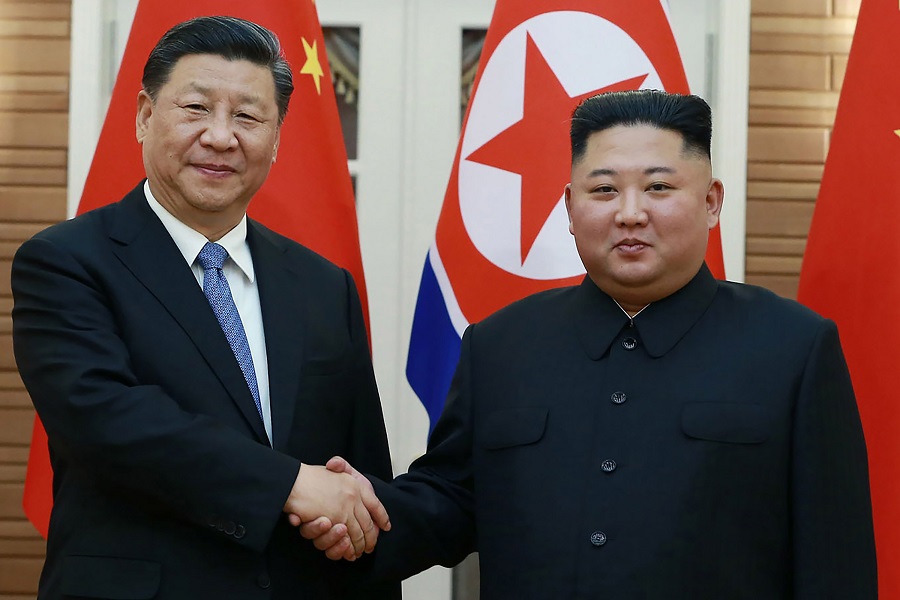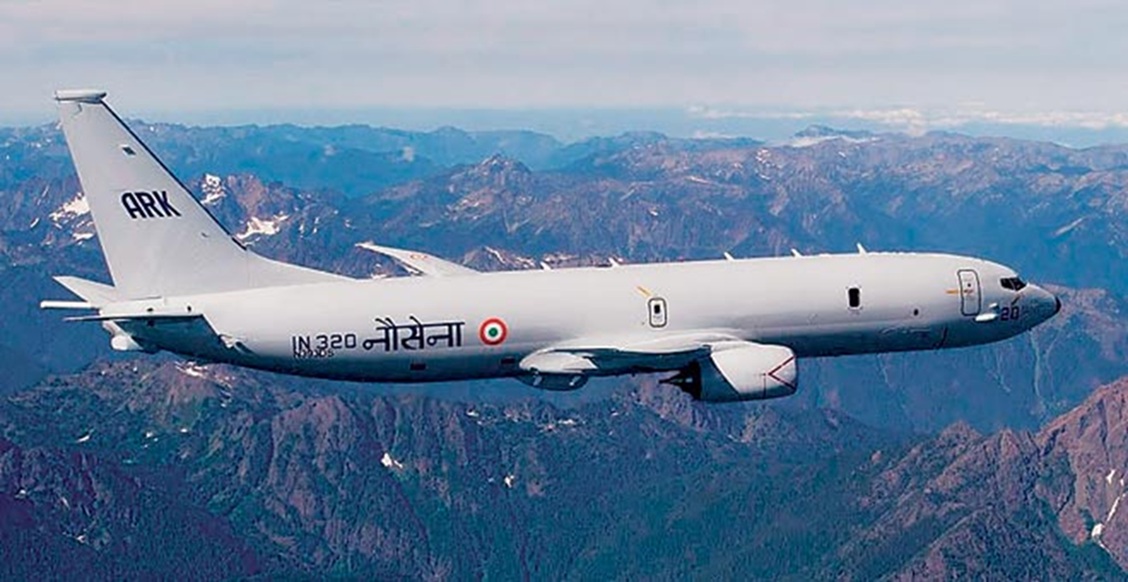Internal renovation of the China-North Korea friendship tower in Pyongyang has been completed. The 1959 Tower is a symbolic monument dedicated to the Chinese People’s Volunteers (CPV) who fought the War against the US Aggression to aid Korea from 1950 to 1953.
In the complex realm of international relations, symbolism often plays a significant role in shaping perceptions and conveying messages between nations. The completion of the North Korea-China Friendship Tower improvement works serves as a potent symbol during the ongoing Ukrainian conflict, highlighting the intricate relations between North Korea, China, and their alliance with Russia. This article aims to dissect the various dimensions of this symbolic act and shed light on its implications.

The North Korea-China Friendship Tower-A Historical Icon
The North Korea-China Friendship Tower, also known as the Juche Tower, holds significant historical importance in the relationship between North Korea and China. Its construction in 1982 in the capital city of Pyongyang was a monumental tribute to the enduring alliance and friendship between the two nations.
The decision to erect such a prominent structure was indicative of the deep-rooted historical and ideological connection that has shaped the relationship between North Korea and China. It represents a period when the two nations were solidifying their partnership and seeking to showcase their shared values and aspirations.
The Friendship Tower carries profound symbolic value, symbolizing the close ties between North Korea and China and serving as a testament to their enduring friendship, collaboration, and alliance. Several aspects highlight the significance of the Friendship Tower in this context:
Historical Bond
The tower stands as a tangible representation of the historical bond between North Korea and China. It signifies the strong relationship that has been cultivated over time through shared experiences, common struggles, and mutual support. The tower serves as a visual reminder of the historical context that has shaped the present-day alliance between the two nations. Beyond the realm of politics, the Friendship Tower embodies the cultural affinity between North Korea and China. Both nations share a rich cultural heritage and traditions that have contributed to their close connection. The tower serves as a symbol of the cultural exchange and mutual appreciation that has thrived between the two countries.
The Friendship Tower represents the alignment of political aspirations between North Korea’s Juche ideology and China’s socialist principles. It serves as a physical manifestation of their shared commitment to certain political values, such as self-reliance, sovereignty, and socialism. The tower’s construction reflects the common vision for their respective societies and their dedication to pursuing similar political paths.
The grandeur and prominence of the Friendship Tower make it a notable tribute to the friendship and alliance between North Korea and China. Its towering presence in the capital city of Pyongyang signifies the importance both nations place on maintaining a strong partnership. The tower stands as a proud symbol of their unwavering dedication to preserving their close ties and jointly navigating the challenges they face.
Significance of the Friendship Tower’s Completion
A. Symbolizing Enduring Solidarity
The completion of the Friendship Tower improvement works reaffirms the enduring solidarity between North Korea and China. It serves as a public demonstration of the bloc’s unity and shared objectives, particularly during a time of heightened global tensions. By completing the tower’s improvement works, the two nations symbolically reinforce their commitment to maintaining a strong alliance and standing together in the face of external challenges.
B. Asserting Regional Influence
The Friendship Tower’s completion sends a strong message to the international community, underscoring the influence of the North Korea-China-Russia bloc in shaping regional dynamics. It serves as a reminder that the bloc is capable of asserting its collective interests and promoting an alternative vision of global order. The tower’s completion serves as a visible manifestation of the bloc’s intent to maintain a strong presence and influence in the region.
C. Enhancing Strategic Coordination
The completion of the Friendship Tower not only symbolizes unity but also signifies the deepening of strategic coordination within the North Korea-China-Russia bloc. It reflects their shared commitment to preserving stability, protecting national interests, and countering perceived threats from the West. The tower’s completion serves as a visual representation of the bloc’s concerted efforts to enhance coordination and cooperation in various areas, including diplomacy, security, and economic ties.
The completion of the improvement works of the Friendship Tower holds great significance for the strength of the alliance between North Korea and China. It signifies the enduring solidarity between the two nations, their ability to shape regional dynamics, and their commitment to strategic coordination
By completing the improvement works of the Friendship Tower, North Korea and China reinforce their bond and emphasize their collective strength and influence. This symbolic gesture underscores the enduring nature of their alliance and their shared objectives in a complex geopolitical landscape. Additionally, it highlights their commitment to regional stability, the protection of their national interests, and their coordinated efforts to counter perceived external threats. The completion of the Friendship Tower stands as a testament to the unity, influence, and strategic coordination within the North Korea-China-Russia bloc.
The Ukrainian Conflict and Global Dynamics
A. Overview of the Ukrainian Conflict
The Ukrainian conflict, which began in 2014, emerged from the country’s political transition and subsequent Russian intervention. It has resulted in territorial disputes, geopolitical tensions, and strained relations between Russia and the West. This conflict has had far-reaching implications for regional and global dynamics.
The conflict in Ukraine was triggered after Russia’s annexation of Crimea and the escalation of protests in Ukraine. Russian troops took control of Crimea and annexed it following a disputed local referendum. Pro-Russian separatists in the Donetsk and Luhansk regions held independence referendums, leading to conflict with the Ukrainian military. The Minsk Accords were attempted as a diplomatic resolution, but they were largely unsuccessful. NATO deployed battalions to Eastern Europe as a deterrent, and the United States imposed sanctions and approved the sale of anti-tank weapons to Ukraine.
B. The Global Implications of the Ukrainian Conflict
Russia’s annexation of Crimea and the ongoing conflict in Ukraine have significant implications for global security. The instability in Ukraine, marked by a change of government, territorial annexation, and economic contraction, has left the country far from stable. Eastern Ukraine remains at risk of Russian military intervention, with reports of skirmishes and protests causing fear among the population. The central government in Kyiv lacks representation and faces challenges in organizing a legitimate presidential election. The involvement of Ukraine’s powerful business elite and the potential for separatism in other parts of the country further complicate the situation. This crisis has ramifications for Putin’s foreign policy strategy, European security, U.S. strategy, efforts to end the Syrian war, negotiations on Iran’s nuclear ambitions, and China’s foreign policy, and may mark a new strategic era in global affairs.
Understanding the current situation requires examining the events in the Donbas region of eastern Ukraine seven years ago. A clash in April 2014 marked the beginning of a war that resulted in over 13,000 casualties. Despite a decrease in fighting intensity, lasting peace remains elusive, with 104 deaths recorded in 2020. Varying narratives exist regarding the causes of the war, with Ukraine claiming a Russian invasion in response to a political transition, while Russia denies involvement and attributes the conflict to an internal dispute in Ukraine. Academic assessments reflect this divide, with some emphasizing domestic factors and others highlighting Russia’s role. Analyzing a dataset of news reports, six key episodes were identified that led to the escalation of the conflict in the Donbas region.
The 2014 war between Russia and Ukraine has jeopardized the post-Cold War order, with far-reaching international consequences. This paper aims to analyze the underlying factors behind the conflict, exploring whether it stems from typical security concerns or deeper, less apparent reasons. By examining the war through the lenses of realism, liberalism, and constructivism in international relations, the study identifies the main contributing factors to its outbreak, including Western expansion, security dynamics, domestic systems, and identity.
Implications for Relations with Russia
A. Strengthening Russia’s Position
The completion of the Friendship Tower enhances Russia’s position within the bloc, as it reinforces the notion of a unified front against Western influence. By showcasing their alliance and cooperation, North Korea and China lend support to Russia’s actions and policies, particularly during the Ukrainian conflict. This strengthens Russia’s international standing and bolsters its ability to exert influence in global affairs.
B. Expanding Geopolitical Synergy
The cohesion of the North Korea-China-Russia bloc, as demonstrated by the Friendship Tower, opens avenues for expanding geopolitical synergy. The completion of the tower highlights the potential for enhanced coordination not only on regional concerns but also on global issues. By deepening their strategic alignment, the bloc could impact global dynamics, challenge the existing balance of power, and promote an alternative narrative to Western dominance.
The completion of the Friendship Tower has several implications for relations with Russia. Firstly, it strengthens Russia’s position within the bloc and provides symbolic support for its actions and policies, particularly during the conflict in Ukraine. The demonstration of alliance and cooperation between North Korea, China, and Russia enhances Russia’s image as an influential actor and reinforces its credibility on the international stage.
By strengthening the alliance between North Korea, China, and Russia, the Friendship Tower paves the way for greater geopolitical synergy. This suggests the possibility of increased coordination not only on regional issues but also on global challenges. Such enhanced coordination could impact global dynamics, challenge the existing balance of power, and promote an alternative vision to Western dominance. The cooperation between North Korea, China, and Russia has the potential to reshape the global geopolitical landscape and strengthen their collective influence.
Image Courtesy: Military.Com
Disclaimer: The views and opinions expressed by the author do not necessarily reflect the views of the Government of India and Defence Research and Studies
References
Smith, John. “The Impact of Geopolitical Alliances on Global Power Dynamics.” International Journal of Political Science 45.2 (2022): 112-135.
Johnson, Sarah. “Exploring the North Korea-China-Russia Partnership: Implications for International Relations.” Journal of Global Studies 18.3 (2021): 76-98.
Williams, David. “Friendship Tower and its Role in Shaping Geopolitical Synergy.” International Relations Quarterly 32.4 (2023): 210-228.
Chen, Wei. “Russia’s Position within the North Korea-China-Russia Bloc: A Comparative Analysis.” Journal of Geopolitical Studies 15.1 (2022): 45-63.
Lee, Ha-Young. “Implications of the Friendship Tower for Russia’s Relations with the West.” Journal of International Affairs 50.2 (2023): 88-107.
Kim, Jong-Soo. “The Role of North Korea-China-Russia Cooperation in Challenging Western Dominance.” Comparative Politics Review 28.3 (2022): 142-165.
Zhang, Wei. “Geopolitical Synergy and Global Dynamics: Assessing the Friendship Tower’s Impact.” Global Studies Journal 12.4 (2023): 75-94.
Li, Ming. “The Friendship Tower and its Implications for the Balance of Power in Northeast Asia.” Security Studies Quarterly 40.1 (2022): 28-49.
Park, Min-Ji. “Russia’s Influence in the North Korea-China-Russia Bloc: A Comparative Study.” Journal of East Asian Studies 25.2 (2023): 167-189.
Wang, Mei. “The Friendship Tower: Assessing its Impact on Russia’s International Standing.” International Relations Review 35.3 (2022): 76-94.





